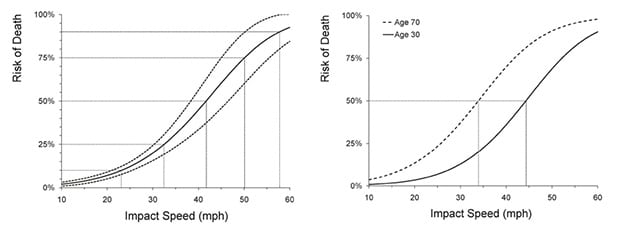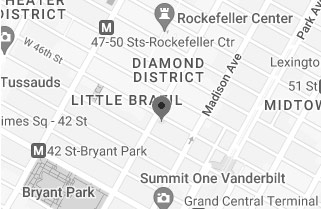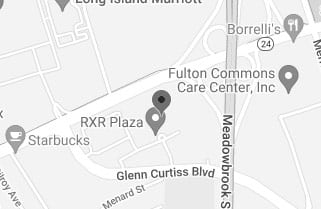In 2011, a researcher from the Triple AAA Foundation for Traffic Safety published a report on the death rate in pedestrian-car accidents based on federal study of car crashes from 1994-1998; the study found the faster a car was going or the older the pedestrian, the deadlier the outcome of the accident. Lena Groeger, the author of the cited article, created an interactive chart based on the Triple AAA data, showing the correlation of speed and the age of a person, which is available on the link below. The interactive chart shows a 30 year old hit by a car going 45 mph has about a 50% chance of being killed, while a 70 year has a 50% chance of dying when hit by a car going 35 mph. Although these percentages are not exact, they show that age makes a significant difference. In addition to age playing a role, the chart shows that cars going over 20 mph rapidly become more deadly.
According to the Triple AAA data, a person is 70% more likely to be killed when struck by a car going 30 mph versus 25 mph. In 2014, Mayor Bill de Blasio decreased the New York City (NYC) speed limit from 30 mph to 25 mph. NYC saw the fewest traffic accidents in 2015 since 1910; there were a total of 231 deaths with 134 of them being pedestrian. Many saw the decrease in the speed limit as unnecessary and annoying but it makes a difference in the survival rate of those who are hit. Tobias Niebuhr, a statistician at the University of Hamburg who studies pedestrian risk recently published a study showing older people are more likely to seriously injured or killed at all collision speeds.
Most of the studies are based on small samples and could possibly lean toward over-representing severe and fatal accidents, other factors such as the size of the car, how much you weigh, at what angle you are hit among other considerations. London’s Department of Transport conducted a similar study in 2010 that reviewed data on impact of speed on pedestrian safety; the study concluded that risk of fatality slowly increases until impact speed of 30 mph, after which risk rapidly increases.
Reducing the speed limit does help to decrease the amount of pedestrian fatalities. However, that does not mean all cars will begin to drive slower; better signage, enforcement, the design of intersections and streets can also reduce speed. The National Association of City Transportation Officials Urban Street Design Guide showed cars go faster when wider lanes are available, traveling about 9 mph faster for every 3 feet wider. Although the speed limit is not a sole factor, the interactive chart shows how much the difference of a few miles per hour makes in a pedestrian-car accident.
If you or a loved one has been injured in a pedestrian-car accident, contact the experienced pedestrian injury attorneys at the Law Offices of Thomas L. Gallivan, PLLC today.
Website Reference:




